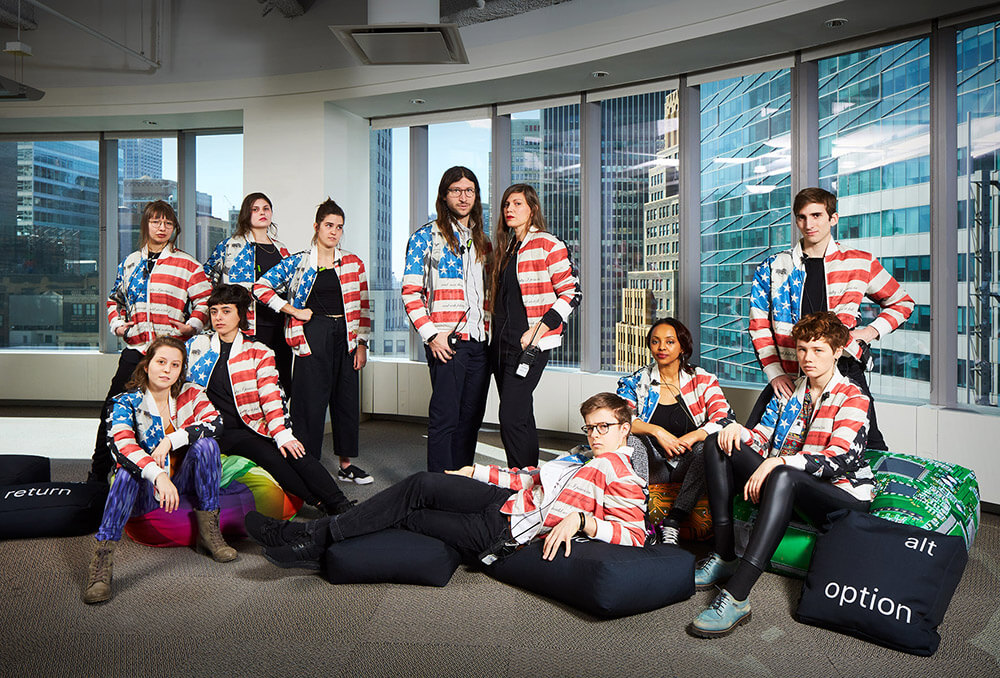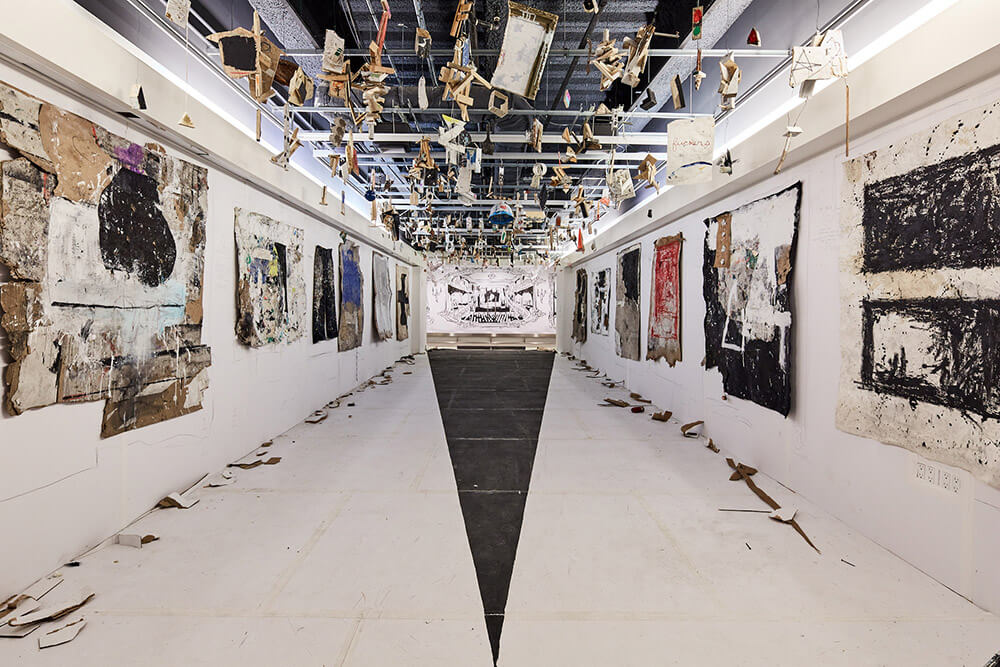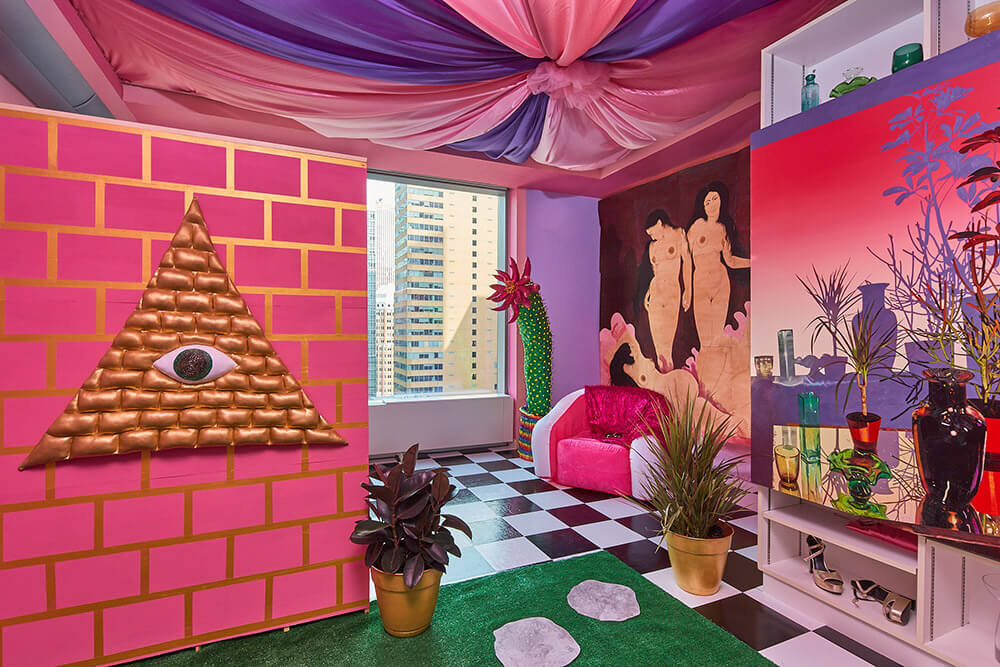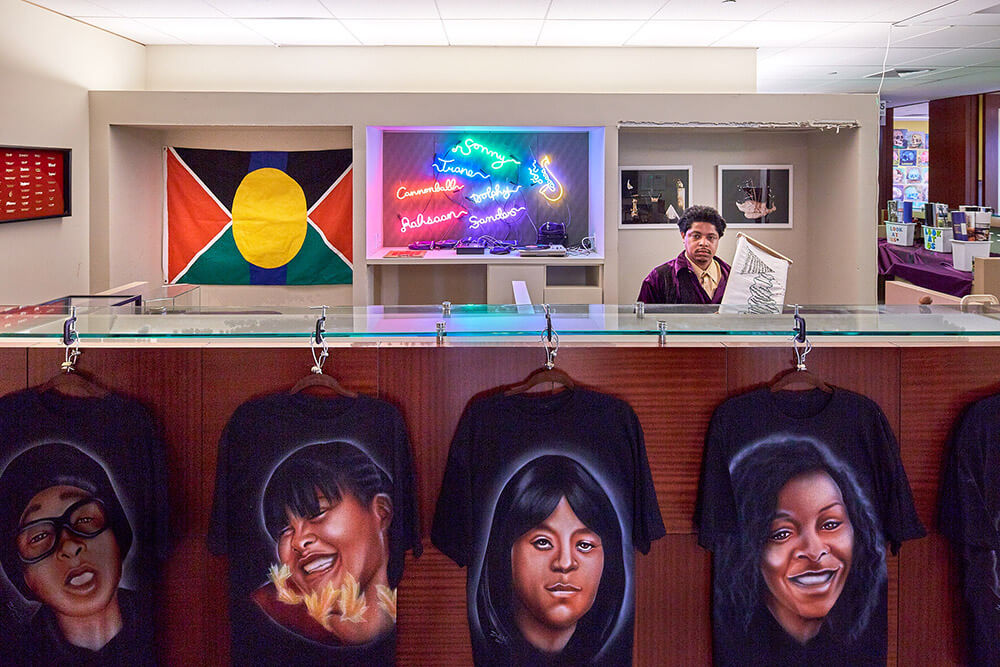Escaping the Art Fair Norm with SPRING/BREAK

I can’t remember the last time I said (or really anyone else has said), “I’m looking forward to going to [enter name of contemporary art fair here].” New York City is hectic enough on its own, and when Armory Week rolls around, the cascade of fairs on offer seem both overwhelming and overwhelmingly expensive.

The SPRING/BREAK Art Show, however, has taken a different approach. Now having completed its sixth edition, founders Ambre Kelly and Andrew Gori have seen the curator-driven fair shift from a quirky, project-based showing at the St. Patrick Old School in Soho to the disused Farley Post Office in Midtown, and now to the Condé Nast building in Times Square. Read on as they discuss the shifts, goals, and insights of contemporary art and commercial enterprise with Frontrunner.
I’m fairly certain we met in Miami back in 2013, at the Venus Over Manhattan exhibition. How time flies! Does SPRING/BREAK feel like a completely different entity now than it did at the beginning?
We started SPRING/BREAK Art Show as a way to show work that we believed in, from artists that were either unrepresented or established and extolling projects no traditional commercial environment could expend the budgets [for]. In this regard, we’re exactly the same as we were when we started. Established and emerging artists share rooms, for free, in underused and historic New York City spaces. We approve everything that comes in, not only for quality control, but for our sense of its relevance in the current cultural climate and our own personal tastes. Things that probably feel a little different since 2013 when we first met: now alongside upstart artists, Instagram-happy students, and your rag-tag armies of interested cool-kids, there are blue chip collectors, publishing magnates, institutional heavy-weights, and cultural luminaries freely mingle. Either they are friends-of-friends or heard of us just-so-happens, not to mention International audiences in town for the other fairs, more recently hip to the whole SPRING/BREAK thing.

I’ve always perceived a deep appreciation for immersive, complex installation works with film/video and static media in play at SPRING/BREAK. Always stationed in a quirky, slightly run-down location like the Old Schoolhouse on Mott Street or the Farley Post Office. How does (or doesn’t) location play a role in the development of the fair?
Curatorial space is in this way either an amplifier to artwork or cultural prosthesis to it, an equation we think of as either 1 + 0 (landing you at an ideal, undisturbed “1”) or 1 + 1 (getting you to a whole new experience all together you could call “2”). SPRING/BREAK leans toward the latter model, but at former commercial offices in 4 Times Square, we feel this “2” we achieved gave even more potential for a broader exhibition of works. Thanks to the lower- impact prosthesis of wall-to-wall carpets, officious mazes, power-decor wood panel, and frosted sliding glass doors inside (a far cry from the classical architecture of our prior venues), along with video billboard and steel glint of buildings outside. All of it was effortlessly overtaken, usurped, and re-absorbed into gallery contexts ranging from white box-clean to installation-ravaged, largely because the space itself was a little quieter despite its own voice being very distinctly heard.

While walking around several editions of the fair, I’ve heard non-art-related visitors say that the work doesn’t “make sense” to them or that it feels “too detached” from forms they recognise. While those within the art world rave about the fair and it’s offerings (as I do). How do you respond to those who say they feel detached or alienated from the fair and it’s ethos?
That’s an interesting question. We’ve never really experienced this firsthand, largely because we find that non-art-related visitors would likely be equally, if not more, alienated at any other art fair whose environs further promote the “whitewall aesthetic” and “industry-only” feeling of the trade show veneer. Typically, the venue choice is built into our shows to offer a cultural-historic element that we hope grounds the antiseptic flavor of the art-viewing experience with something (sometimes literally) pedestrian, familiar, and ‘closer to home’ for non-art industry people. Art industry athletes are offered a much-needed break from the booth splay typical of other fairs, and people who aren’t going to anything but ours get to see the inside of a building they’ve walked by and wondered about dozens of times — win-win for us! We do think some of the work in SPRING/BREAK embraces more experimental forms and mediums, and I also think the act of simply placing work that doesn’t speak directly to the market within a salable context confuses the habitual fair-goer as a kind of commodity culture shock; a kind of ‘true mirror’, it does take a second to shake into, but we can only reckon this amplifies interest on both ends rather than giving any kind of reason not to attend.
As we grow, I hope we’re getting closer to answering this question by example. Annually, our sales jump exponentially. Although our intention is to replace the foreground motivation of the fair exhibition to be closer to that of a museum show — where artworks are chosen and placed according to an evolving path of intention, meaning, and context — we are also happy to be an evolving a model where this attention to the idea is preserved and upheld without compromising the potential for artists and curators to participate in the natural, compensated value for that work. We believe that the complexity of the idea and the mastery of formal actualisation together are not the enemies of commercial validation, but [they] can actually return the creative markets back to the orientation we prefer: where urgency of concept and mastery of craft can drive financial interest, rather than it being removed from the market simply because it is not the trade show applicant within a whitewall machine.

Sometimes, culture-providers only have to place work within a space that demands it be valued for it to be considered as such. But you must carve out this space yourself, as the areas predestined for market platforms are already heaping with excess, (not always legitimate) overflow. So long as the practice of leading curation according to perceived sales benefits are eschewed, culture-making happens, attendees sense the validity of the experience, and collectors acquire what they sense is worth upholding from the vitality of a creator-dictated (rather than marketing-determined) art world clan.
Finally, addressing the inevitable, how does SPRING/BREAK intend to move forward in an age of creeping anti-intellectualism, fear, discrimination and intimidation of “others”, vis-a-vis the current president?
There’s no better antagonist of anti-intellectualism than occupying market spaces with ideas. ‘Caring’ (empathy) is the potential of art-making and art-viewing — to be placed within the perspectives of others, and learn through those perspectives be they formal, intellectual, racial, cultural, what have you. The Market is the psychological enabler of a cultural contract that you don’t have to care. ‘It’s just business’ might as well be the mantra of the late 20th Century. It’s how we, as a nation, have convinced ourselves of needless slavery, of needless wars — even of something as simple (but obviously as disempowering) as women’s wage inequality. ‘We can’t afford to pay women the same!’ ‘It’s just business!’ The more the Idea gains primacy and safe-haven over commercial spaces, literally, and figuratively, the greater the need to think empathically. A way that, to start with, just makes logical sense (current political administrations be dashed), the more the Idea elevates beyond some distracting weapon of elitism (the way it’s often misfired), evolving into a vital necessity to our survival physically and spiritually; transforming the implicit uncaring of modern economic and political practice beyond the ‘me-first’ psychology of personal gain.











Responses